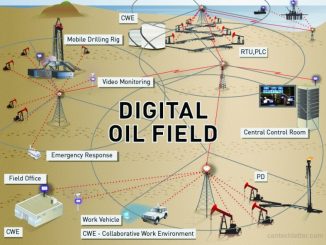 The original concept of the “Big Crew Change” described a seismic shift in the oil and gas industry as the reins of leadership passed from the “calculators and memos” generation to the “connected and digital” generation. This transition, once seen as a slow-moving inevitability, was dramatically accelerated during the COVID-19 pandemic in 2020, reshaping the workforce and catalyzing digital transformation across the industry.
The original concept of the “Big Crew Change” described a seismic shift in the oil and gas industry as the reins of leadership passed from the “calculators and memos” generation to the “connected and digital” generation. This transition, once seen as a slow-moving inevitability, was dramatically accelerated during the COVID-19 pandemic in 2020, reshaping the workforce and catalyzing digital transformation across the industry.
The Big Crew Change in Context
In the early 2010s, industry observers like Rembrandt and studies by the Society of Petroleum Engineers highlighted alarming workforce demographics. The majority of the oil and gas workforce was nearing retirement age, and there was a critical shortage of experienced “mid-career” professionals who could independently make decisions in exploration, development, and production.
Key Challenges Identified in 2011:
- Aging Workforce: Employees averaged 46 to 49 years old, with 50% expected to retire within six years.
- Knowledge Harvesting: A looming risk of “terminal leakage” as experienced professionals left without transferring their institutional knowledge.
- Talent Pipeline Issues: Despite high placement rates and top-tier starting salaries for petroleum engineering graduates, the industry faced a dearth of experienced personnel to mentor incoming workers.
2020: The Pandemic Catalyst
The COVID-19 pandemic in 2020 became an inflection point for the Big Crew Change.
- Early Retirements: Economic uncertainties and health concerns prompted many older workers to retire earlier than anticipated, further shrinking the pool of experienced professionals.
- Remote Work Revolution: The pandemic accelerated the adoption of remote collaboration technologies, forcing the industry to embrace tools like Microsoft Teams, Zoom, and digital twin simulations to enable knowledge sharing and real-time collaboration.
- Upskilling and Automation: With limited face-to-face mentoring opportunities, companies turned to adaptive intelligence systems, data warehouses, and knowledge management platforms to bridge gaps in expertise and ensure operational continuity.
The pandemic exposed the vulnerabilities of traditional knowledge transfer methods but also demonstrated the resilience of organizations willing to embrace innovation.
Knowledge Harvesting: The Industry’s Lifeline
As predicted, the challenge of knowledge retention and transfer has proven to be one of the most critical hurdles of the Big Crew Change. To address these challenges, companies have turned to:
- Data Warehouses and Knowledge Systems: Centralized platforms now store not just operational data but also curated insights, lessons learned, and best practices.
- Digital Twin Technology: Simulated environments enable younger employees to learn from historical scenarios and test new approaches in a risk-free setting.
- Artificial Intelligence (AI) and Machine Learning: These tools synthesize vast amounts of operational data to guide decision-making and compensate for gaps in human expertise.
Despite these advancements, the human dimension of knowledge transfer remains irreplaceable. Mentorship programs have transitioned into virtual mentoring, where experienced professionals coach new employees using digital tools.
The Rise of the “Nerds”
The oil and gas industry has shifted from the era of the wildcatter—a time defined by instinct, grit, and field experience—to the era of the nerd, where data, algorithms, and proactive intelligence are paramount.
- Proactive Intelligence: AI-driven systems analyze terabytes of data to anticipate challenges and opportunities, driving decisions faster and more accurately than ever before.
- Digital Transformation: Automation and predictive analytics have become central to exploration, production, and safety operations.
- Innovation: As Otto Plowman predicted, the industry’s ability to innovate—coupled with new technology—has become the defining factor for success.
While the retiring workforce took with them invaluable tacit knowledge, the “connected generation” has risen to the challenge, leveraging digital tools to fill the gaps and drive the industry forward.
Looking Ahead
In 2025, the oil and gas industry continues to evolve. The knowledge lost during the Big Crew Change is being mitigated by:
- Collaborative Platforms: Real-time tools for sharing and co-creating solutions.
- Integrated Systems: Seamlessly connected knowledge bases and IoT-enabled devices.
- Future-Proof Talent Pipelines: Universities and companies are now aligning curricula and training programs with the industry’s growing reliance on data, AI, and automation.
The wildcatter spirit of exploration persists, but the power of data-driven innovation now augments it. The future is here, and it’s being led by the digitally native workforce that emerged stronger from the challenges of the pandemic.
Blog by Mark Reynolds, updated December 2024.
